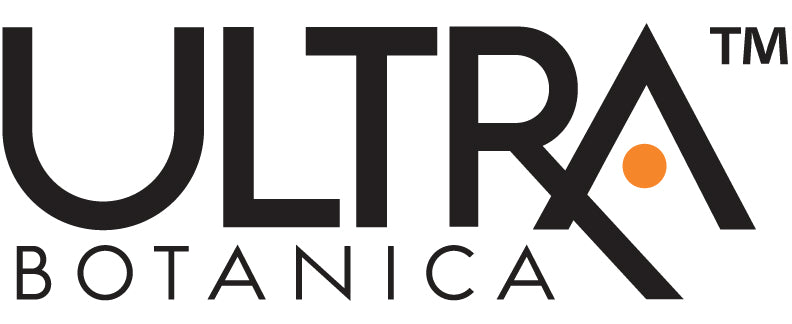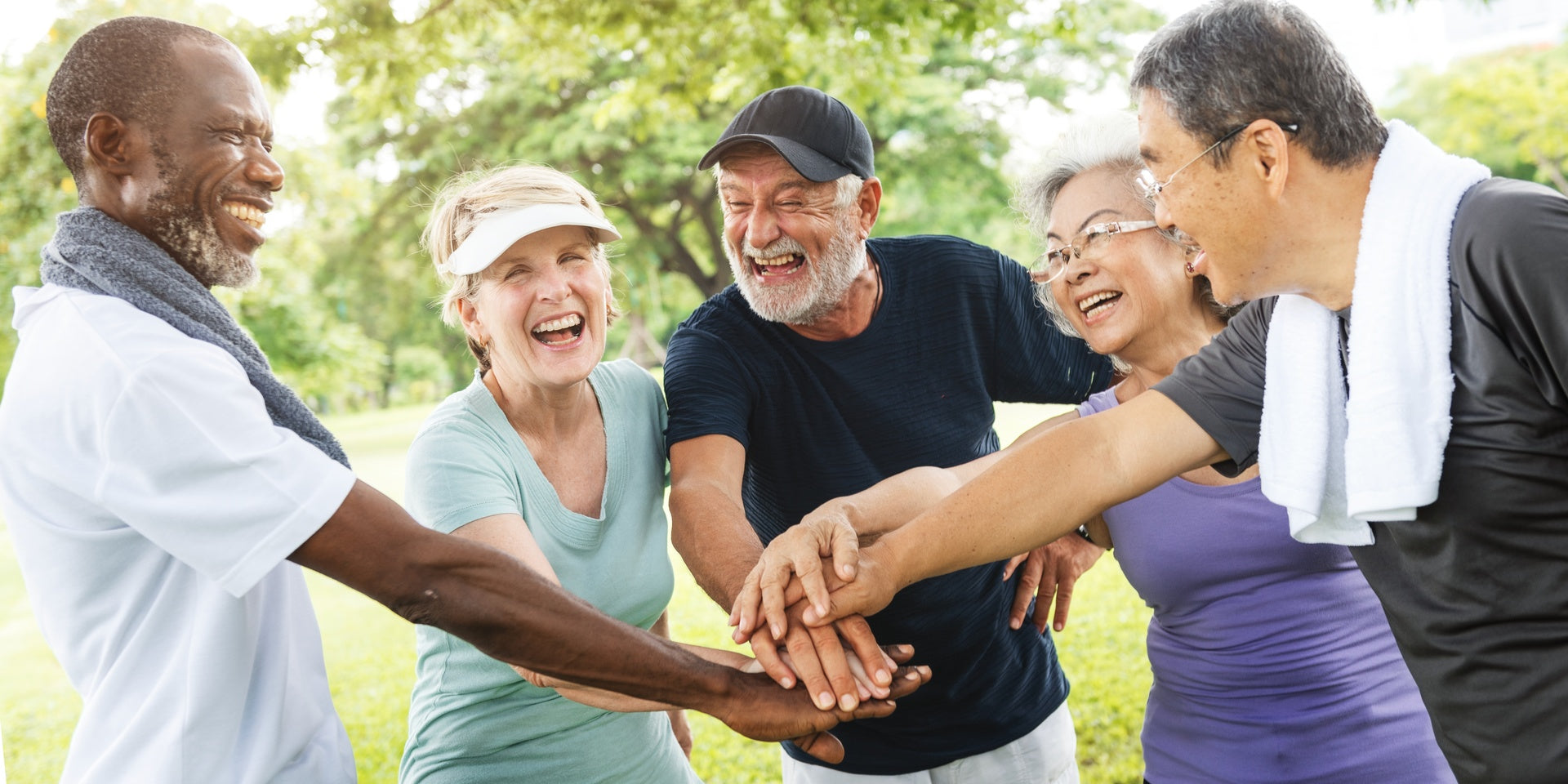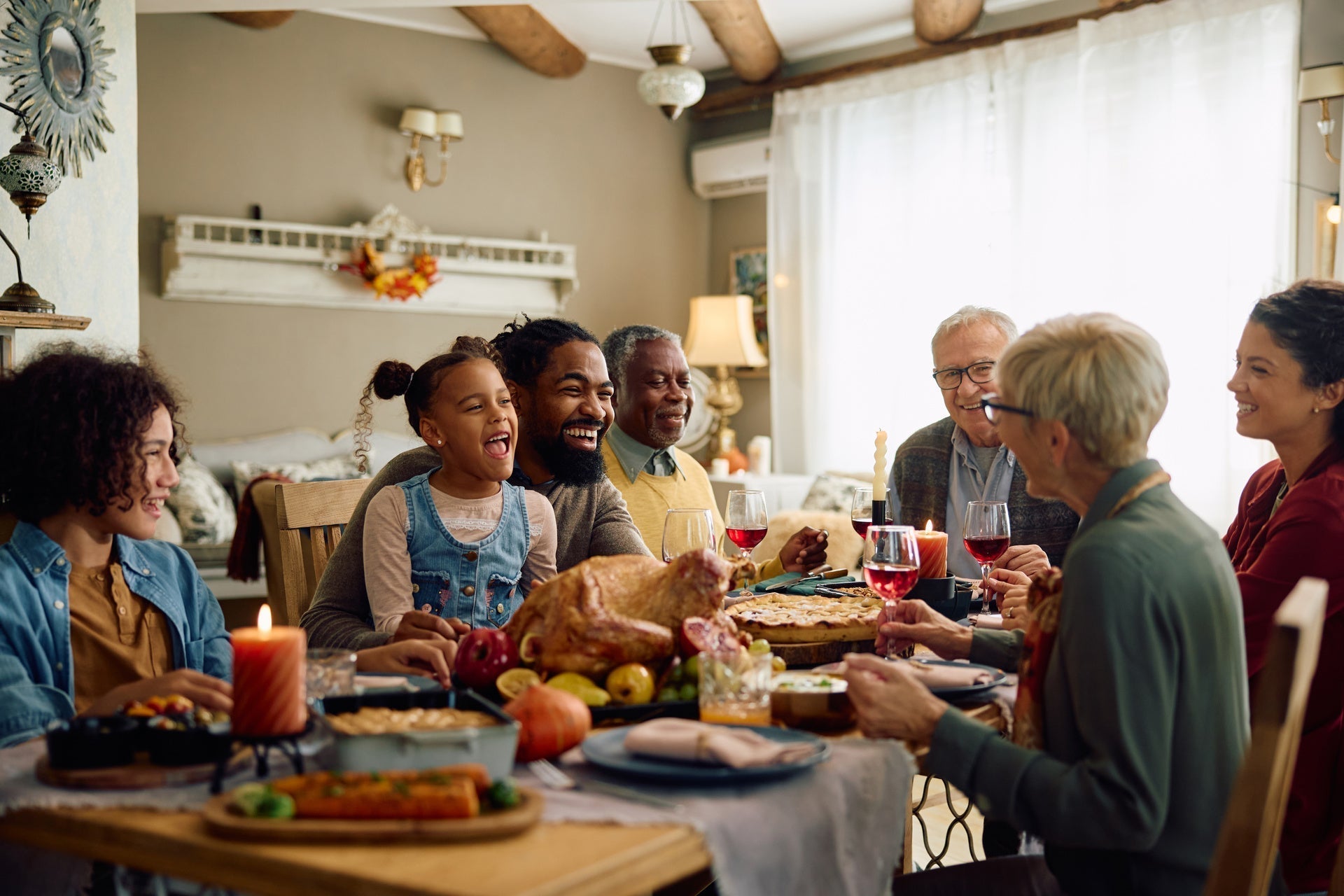Have you ever wondered if there’s a real path to living a longer, healthier, and happier life? Many of us, especially as the years go by, turn to trendy diets, intense workout programs, or expensive supplements in search of answers.
The Blue Zone lifestyle suggests the solution may not be a miracle cure but rather a set of simple, consistent habits. Blue Zones are real communities where people often live well past 100 years old.
They show us that the way we eat, move, and connect with others can profoundly influence both longevity and quality of life. Embracing the Blue Zone lifestyle can give you practical, proven steps to add not just more years to your life, but more life to your years!
So, What Exactly Is a Blue Zone?
The term Blue Zone may sound like a luxury vacation spot, but it refers to five regions worldwide where people live exceptionally long, healthy lives—often reaching 100 or more.
National Geographic Fellow Dan Buettner and his team identified these longevity hotspots, marking them with blue ink on a map—and that name stuck.
His research revealed that longevity isn’t just about genetics; studies, including the Danish twin study, show genes account for only about 20% of lifespan.
The remaining 80% depends on lifestyle and environment, giving us significant control over our health and longevity.
The five original blue zone regions of the world's longest lived peoples are:
- Sardinia, Italy: Located in the mountainous highlands, this region is home to the world's highest concentration of male centenarians. Their longevity is linked to a diet rich in whole grains, beans, garden vegetables, and a socially engaging lifestyle.
- Ikaria, Greece: An Aegean island with some of the lowest rates of dementia and chronic disease. Ikarians follow a variation of the Mediterranean diet, enjoy strong social connections, and take regular afternoon naps.
- Nicoya Peninsula, Costa Rica: A community with a strong sense of purpose, or "plan de vida." Their diet is centered on corn, beans, and squash, and they benefit from calcium-rich water and lifelong physical labor.
- Loma Linda, California: Home to a community of Seventh-day Adventists who outlive the average American by a decade. The Adventist community focuses on a vegetarian diet, regular exercise, and strong faith-based social networks.
- Okinawa, Japan: A place where the world's longest-lived women reside. Their plant-based diet, lifelong social support groups called "moais," and strong sense of purpose contribute to their remarkable longevity.
Buettner's team did more than just find these places; they studied them closely to see what they all had in common.
What they discovered were nine powerful, yet simple, habits that threaded through all these communities. These findings form the main content of the Blue Zone lifestyle philosophy.
Adopting a Blue Zone Lifestyle With the Power 9
The nine shared principles are called the "Power 9." They are the foundation of the Blue Zone lifestyle and a core finding of the Blue Zones Project. These are not strict rules or complicated programs, but simple lifestyle practices woven into the fabric of daily living.

1. Move Naturally
People in Blue Zones don’t hit the gym or run marathons—they stay active naturally. Their environments encourage daily movement, like walking to a friend’s house or the market, gardening, or doing yard work by hand.
This steady, low-intensity activity proves more beneficial over a lifetime than occasional intense workouts. Often called a “life radius,” this walkable, active lifestyle keeps sedentary habits—and their chronic disease risks—at bay.
Research shows even light activity lowers mortality risk in older women, and a 2025 study revealed sedentary patterns often emerge more than a decade before heart disease diagnoses, leaving you time to change course.
Regular movement reduces inflammation, stress, and blood sugar while improving sleep, weight, and overall health. In short, an active daily life is central to the Blue Zone lifestyle and essential for longevity.
2. Find Your Purpose
Do you know why you wake up in the morning? In Blue Zones, people have a strong sense of purpose. Okinawans call it "ikigai," and Nicoyans call it "plan de vida."
Both translate to "why I wake up in the morning."
Having a clear purpose is about more than just having goals; it's about feeling your life has meaning. Research suggests that people with a sense of purpose live up to seven years longer than those without one.
This purpose can be about family, a passion, or even volunteer opportunities within the community. This sense of direction gives life a structure, and a reason to stay engaged and healthy.
It fuels resilience and provides a psychological buffer against the stresses of life, and is a powerful driver for healthier lives.
3. Down Shift and Reduce Stress
Everyone experiences stress, but people in Blue Zones have routines to manage it. This is important because chronic stress leads to inflammation, a major cause of age-related diseases. Managing stress is a pillar of their long-term community health.
Their stress relief is not complicated. Okinawans take a few moments each day to remember their ancestors. Ikarians take a daily nap, and Sardinians enjoy a happy hour with friends within their social network.
These simple acts of shedding stress are powerful medicine for a long life. Finding a personal routine to decompress, whether it's through meditation, prayer, or spending time in nature, is a key lifestyle recommendation.

4. Follow the 80% Rule
Most of us have eaten until we’re stuffed—especially on holidays. But in Blue Zones, people actively avoid it. Okinawans follow a 2,500-year-old mantra, Hara hachi bu, meaning “stop eating when you’re 80% full.”
That 20% gap between feeling satisfied and feeling stuffed can easily mean the difference between losing weight or gaining it.
Mindful eating habits prevent overeating, support healthy metabolism, and reduce the health risks linked to excess processed foods.
Gentle caloric restriction like this is one of the most consistent findings in longevity research. By placing less metabolic stress on the body over a lifetime, it plays a key role in the lasting health seen in Blue Zone populations.
5. Eat a Plant-Forward Diet
Diet is a cornerstone of the Blue Zone lifestyle, and it’s overwhelmingly plant-based. Beans take center stage, with residents eating about a cup each day for their fiber and protein benefits.
Their plates are filled with vegetables, fruits, whole grains, and nuts, while meat is eaten sparingly—often in small portions for special occasions.
This way of eating, similar to the Mediterranean diet, delivers a steady supply of nutrients and antioxidants. Processed foods, added sugars, and unhealthy fats are rare, making whole, natural foods the foundation of the Blue Zone lifestyle diet.
6. Drink Wine at 5
It may come as a surprise, but in most Blue Zones—except among the Adventists in Loma Linda—people drink alcohol moderately and fairly regularly.
For many, that means one to two small glasses of red wine a day, typically enjoyed with friends or over a good meal. The key is moderation, not binge drinking or overindulgence.
In Sardinia, for example, locals sip Cannonau wine, rich in antioxidants that support health. Just as important as the wine itself is the setting—sharing a drink with good company helps reduce stress and strengthen social bonds.

7. Cultivate a Sense of Belonging
Nearly all the centenarians interviewed by Dan Buettner's team belonged to a faith-based community. The specific faith didn't seem to matter. Research has shown that attending services four times a month can increase life expectancy by several years.
This sense of belonging gives people strong social networks and spiritual grounding. It provides comfort, purpose, and a built-in support network. It's another powerful pillar that contributes to longevity.
Being part of a group that shares common values reinforces healthy behaviors and provides emotional support during difficult times. This community focus is a recurring theme in all Blue Zone lifestyle regions.
8. Put Loved Ones First
In Blue Zones, family is a top priority. They commit to a life partner, a choice that can add up to three years of life expectancy. They also invest a lot of time and love into their children.
Older family members are celebrated and kept close. Many families have aging parents and grandparents living nearby or even in the same home, with health services close by.
Living in this way keeps families connected and gives older generations a sense of purpose and belonging. A strong family structure provides a robust social network that protects against loneliness and depression.
The intergenerational support system provided is beneficial for everyone involved, from the youngest to the oldest members, and they all thrive together.
9. Find Your Lifetime Social Circle
The world’s longest-lived people often choose—or are born into—social circles that encourage healthy habits, helping them live longer.
In Okinawa, for example, people form “moais,” lifelong groups of five friends who provide social, emotional, and sometimes even financial support.
Research shows that healthy behaviors are contagious. When your friends eat well and stay active, you’re more likely to follow suit.
Strong social networks not only foster healthier habits but also protect against loneliness and stress, both of which can shorten lifespan. Surround yourself with people who inspire you to live longer and better.

The Blue Zones Project: Transforming Communities
The lessons from long-lived populations have inspired the Blue Zones Project, a U.S. community health initiative designed to make healthy choices easier for everyone.
Rather than simply offering Blue Zone lifestyle tips, this initiative works with cities, schools, workplaces, and grocery stores to transform communities to naturally support better habits.
One early success story was Albert Lea, Minnesota, where adopting Blue Zone lifestyle principles led to higher life expectancy, lower healthcare costs, more walking, healthier restaurant menus, and stronger social ties.
These results show that the approach works anywhere—not just in the original five Blue Zones.
The project’s Vitality Compass even lets individuals estimate their biological age and get personalized health tips, proving that small, community-driven changes can deliver lasting, life-extending benefits.
A Deeper Look at the Blue Zone Lifestyle Diet
The way people eat in Blue Zones is probably the most studied part of their lifestyle. It's not a restrictive "Blue Zone diet" but a sustainable eating pattern based on whole, delicious foods.
Research conducted by Dan Buettner with Harvard health researchers found that over 90% of their diet came from whole, plant-based foods. There's much overlap between the Blue Zone lifestyle diet and the Mediterranean diet.
Both are associated with slowing down the aging process, reducing inflammation, and slashing incidence of frailty in old age. Let's break down the key food principles that are central to what people in the Blue Zones eat.
The Pillars of a Blue Zone Plate
The foundation of the Blue Zone lifestyle diet is simple and affordable. It relies on foods that have been staples for generations. These longevity foods are nutrient-dense and satisfying.
- Beans and Legumes: The cornerstone of the diet. People in Blue Zones eat all kinds, including fava beans, black beans, lentils, and chickpeas. They're a daily staple.
- Leafy Greens: Think kale, spinach, chard, and fennel. Sardinians are known for their love of wild greens for which they forage themselves.
- Whole Grains: They don't shun carbs. But their carbs come from whole sources like barley, brown rice, and sourdough bread, providing sustained energy with less of a blood sugar spike.
- Nuts and Seeds: A daily handful of nuts provides healthy fats, fiber, and protein. They're a common snack food in many Blue Zone regions.
- Olive Oil: Extra virgin olive oil is a primary source of fat, used for cooking and finishing dishes. Its anti-inflammatory properties are well-documented.
- Tubers: Sweet potatoes are a staple in Okinawa. Other root vegetables are also common and are excellent sources of complex carbohydrates and vitamins.

Simple Food Swaps to Get You Started
Adopting the Blue Zone lifestyle way of eating doesn’t always require a massive overhaul—just a few simple swaps that can make a big difference over time.
Try replacing:
-
Sugary sodas or juices with water, herbal tea, or black coffee.
-
White bread or pasta with sourdough bread.
-
Processed snacks like chips with a handful of mixed nuts.
-
Large servings of meat with smaller portions and more beans.
-
Sugary breakfast cereals with eggs.
Cooking more meals at home is another powerful step. It lets you control ingredients, avoid excess sodium, sugar, and unhealthy fats, and enjoy the social connection that comes from sharing a home-cooked meal with loved ones, in a quieter more relaxed setting than a crowded restaurant offers.
Movement: More Than Just Heading to the Gym
The Blue Zone approach to physical activity is very different from the typical American idea of exercise. It’s not about intense, structured workouts—it’s about weaving natural movement into all parts of everyday life.
While many of us spend our days sitting at desks, in cars, or on couches, people in Blue Zone lifestyles are constantly nudged into activity through daily tasks and social interactions.
A Sardinian shepherd walks miles over rugged hills as part of his manual labor. An Okinawan woman gets up and down from the floor dozens of times. A Nicoyan farmer chops wood and tends his land by hand.
This steady, low-intensity movement keeps their bodies strong, flexible, and resilient well into old age.
How to Add More Natural Movement to Your Day
You don't have to move to a farm in Costa Rica to get these benefits. You can make simple changes to your own environment. Start by looking for ways to be less reliant on modern conveniences.
Could you walk to the grocery store instead of driving? Can you take the stairs instead of the elevator? Can you park at the far end of the parking lot instead of right next to the door?
Simple Blue Zone lifestyle habits like these add up over time and increase your daily activity level.
If you work at a desk, consider getting a standing desk or taking a break every 30 or 45 minutes to walk around. The key is consistency. A short walk every day is better for you than one intense gym session once a week.

The Lifesaving Power of Your Social Circle
Feeling connected to others is a strong biological need. In our busy modern world, it's easy to feel isolated. The Blue Zone lifestyle shows us just how vital social connection is for our health, wellbeing, and longevity.
Loneliness can be as damaging to your health as smoking or obesity. It increases stress and inflammation, which accelerates aging. In contrast, strong social networks provide a buffer against life's difficulties and are crucial for well-being.
Studies have shown that those with strong social connections have a better chance of living longer, healthier lives. Socializing also gives your brain a workout.
When you have a conversation, you're listening, processing information, and responding creatively, which helps keep your mind sharp.
Build Your Own "Moai"
So, how can you strengthen your social connections? Start by nurturing the relationships you already have. Make time for family and friends.
Put down your phone and have a real uninterrupted conversation. Schedule regular get-togethers, even if it's just a simple weekly phone call.
Look for opportunities to meet new people. Join a club, take a class, or find job or volunteer opportunities for a cause you care about.
The goal is to build your social circle, a group of people who share your values and support your efforts at healthy living. This investment in your social health will pay dividends for years to come.

Conclusion
The lessons from the world’s longest-lived people are simple and don’t require pricey gadgets or secret formulas. Longevity comes from small, consistent choices that add up over a lifetime—and the earlier you start, the greater the benefits.
The Blue Zone lifestyle is about creating an environment where healthy choices are the easy choice: moving naturally, eating mostly plants, connecting with a supportive social circle, living with purpose, and finding ways to relieve daily stress.
You don’t need an overnight overhaul. Begin with one or two changes from the Power 9 today. Even small steps toward a Blue Zone lifestyle can lead to more years in your life—and more life in your years!
Frequently Asked Questions
1. Is the Blue Zone diet the same as the Mediterranean diet?
The Blue Zone diet and the Mediterranean diet are similar but not identical. Both focus on whole plant foods, healthy fats like olive oil, and minimal red meat.
The key difference is that the Blue Zone diet is over 90% plant-based, with meat only a few times a month, while the Mediterranean diet often includes more fish, dairy, and some red meat.
2. Do I have to give up meat completely?
No, you do not need to become a strict vegetarian or vegan. People in most Blue Zones eat small amounts of meat, about five times per month on average.
As you age, sufficient protein becomes important, and it's hard to get that from a strictly plant-based diet. The key is to treat meat as a celebratory food rather than a daily staple, with your main content of meals coming from plants and fish.
3. How can I find my best social circle?
Finding your social circle means proactively surrounding yourself with people who support your healthy life habits. Start by identifying the positive influences already in your life and investing more time with them.
You can also join groups that align with your interests, such as a hiking club, a book club, or a volunteer organization, to build new and supportive strong social networks.
4. Can I apply these Blue Zone lifestyle principles if I live in a big city?
Absolutely. While your environment might be different, the principles are universal. You can create a walkable "life radius" by choosing to walk or bike for errands, find community through local groups or clubs, and prioritize home-cooked, plant-based meals.
The Blue Zones Project communities have proven these concepts can improve health anywhere.





Share:
Exploring Curcumin Heart Health: Benefits and Insights
How Curcumin for Brain Health Supports Older Adults